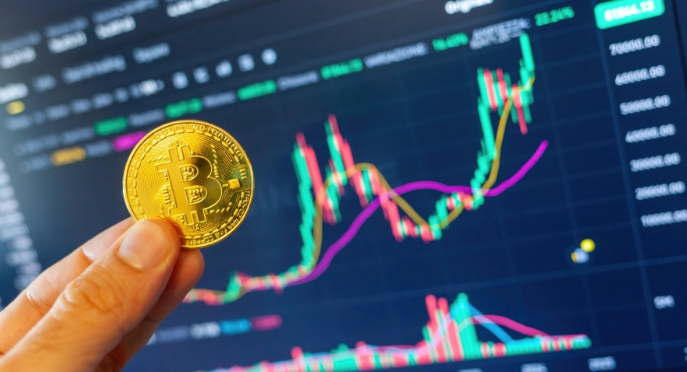Gold, the euro, and Bitcoin are rallying. This followed after the Federal Reserve became dovish. Recent speeches by Fed Chairman Jerome Powell at Jackson Hole fueled optimism for a rate cut in September.

Central bank decisions remain the most powerful force shaping forex markets in 2025
Federal Reserve’s Pivot and Market Response
Federal Reserve communication is one of the most important movers of market action. Fed Chair Jerome Powell’s recent words at Jackson Hole marked a shift. The Fed is turning dovish. It is a major flip from past cycles of tightening. It is a flip that has made waves in markets. It is a flip that suggests the Fed will be more concerned with growth in the economy. It may even try to maintain employment. Inflation targets may become less of an immediate issue. This affects the U.S. dollar straightaway. A dovish Fed will weaken the dollar. That makes it less appealing to investors. Weakening of the dollar will be favorable for risk assets. It will also be favorable for commodities. This is because these assets are priced in dollars. A soft dollar lowers the cost for foreign investors in these assets.
The DXY or U.S. Dollar Index weakened sharply. It dipped into the 98.2 to 98.7 range. The DXY follows the dollar’s value. It measures it against a basket of six major currencies. This was the immediate response to the dovish comments. Dollars were dumped in the market by doing this. They did this hoping that there would be a rate reduction. This should lower the yield of the dollar. This will make the other currencies more favorable. This phenomenon has been observed earlier. It signals the intimacy between the value of currency and policy at the central bank. The DXY was previously bullish. It had bounced back from a support level of 97.70. It had also crossed an August resistance level. This was reversed very quickly by Powell’s statement.
Rise of the Euro Against the Dollar
The euro has increased dramatically. It rose against the U.S. dollar. The EUR/USD currency pair closed the week at about 1.1720. This was close to the top of its recent range. This was underpinned by dollar weakness. The likelihood of rate cutting reduces the attractiveness of the dollar. The euro became an attractive alternative. Players are reversing positions. They are moving out of the dollar and into the euro. This is on the back of interest rate differentials. While the Fed is cutting rates, the yield on the euro becomes more attractive. This can attract more investment into the Eurozone.
The next resistance of the EUR/USD pair is at 1.1750. Breaking above this can take the pair higher. It can reach the 1.1800 to 1.1850 level. There can be a pullback. This would be in the event of fresh dollar demand. It would bring the pair to the 1.1640 to 1.1600 level. A stronger support is at 1.1550. A decline below that on a sustained basis would reverse the present uptrend. Technical factors also caused the pair to move. The pair tested a highly significant support level of 1.1587. It then took off to the higher side by over 100 pips. This was just 30 minutes after Powell’s remarks. This indicates how swiftly the market responded. Technical “magnets” also contributed to the move. These were at 1.1599 and 1.1590. These are typically in the market focus. The next levels to watch are at 1.1736 and 1.1810. These could be the bulls’ targets.
Gold’s Fresh Bullish Strength

Gold, a popular safe-haven asset, has seen its price increase as the U.S. dollar weakens
Gold, normally a safe-haven asset, also did well. It ended the week at some $3,371 an ounce. It maintained its solid uptrend. The precious metal loves a weaker dollar. A weaker dollar makes gold cheaper for foreign buyers. Gold also benefits in a low-rate world. Lower rates reduce the cost of holding gold. Gold is not a yield- or interest-paying instrument. So when yields elsewhere in the financial universe decline, gold appears more appealing. This is a major force behind gold’s price.
Short-term resistance to gold remains in the $3,400 to $3,420 region. Breaking there could accelerate the price move. It can take it to $3,480 to $3,500. Initial support is near $3,330. Solid supports are at $3,300 and $3,250. An open break below $3,250 would ruin the bullish setup. Nonetheless, prevailing momentum favors higher levels. Gold rebounded after falling to just below $3,330. This was done on Friday. The rally was performed after the dovish remarks. The XAU/USD pair is now near $3,385 resistance. A sustained break above here can trigger a $3,420 retest.
Bitcoin Resilience and Bullish View

Bitcoin climbs toward $120,000, supported by risk-on sentiment and institutional demand
Bitcoin has shown remarkable resilience. It has made new highs. It’s at around $116,800 today. That came after a high of $117,500 earlier this week. The behavior of Bitcoin is normally seen with risk-on sentiment. A dovish Fed and a weakening dollar can provide the fuel for that sentiment. This is because investors may ask for higher returns from riskier assets. That includes cryptocurrency. Bitcoin has been one of the big beneficiaries of this trend. Its ongoing rally is a reflection of this market pressure. The cryptocurrency environment has changed. It is now more sensitive to macroeconomic drivers.
Near-term resistance for Bitcoin is at $117,500 to $118,000. A sharp breakout above this could take it to the $120,000 to $125,000 range. Support level first is $115,000 to $113,500. Short of these levels will lead to a correction. A deeper correction can take it to $110,000. But overall, the trend remains bullish. Traders are eyeing $120k handle as the next big target. Bitcoin’s bull run is also supported by its growing adoption. Institutional investors are entering the market more and more. This adds to the buying pressure. This makes the asset less volatile than previously in other cycles.
The Central Bank and Forex Interplay
Central banks are the most influential movers. They’re influential on the forex market. They’re influential on currency prices. Actions by the Federal Reserve are globally relevant. This is due to the reserve status of the U.S. dollar. Other central banks are relevant as well. The Bank of England (BoE) and European Central Bank (ECB) are good examples. They determine interest rate differentials through their monetary policies. These differentials determine the currency valuation. A central bank’s commitment to financial stability boosts investor confidence. This confidence is the largest contributor. It affects a country’s currency demand.
Central banks use various instruments. They use these instruments to regulate their currencies. Interest rates are fixed as a primary tool. They are raised to attract foreign money. This increases demand for money. Reducing rates has the reverse effect. Market intervention is another tool. This is when they buy or sell their own currency. This stabilizes its price. Central banks also regulate supply of money. This is done through methods such as quantitative easing (QE). QE can cause currency depreciation. This is due to a money surplus. Words of central banks are also very important. Official forward guidance can shift market expectations. It can even do so before policy changes. This is why speeches and reports are watched closely by traders.
Strategy to Manage Market Volatility
Forex trading requires a good strategy. It is especially needed in cases of heightened volatility. Central bank events usually result in large market movements. Traders need to know. They need to keep up with central bank timetables and news alerts. Reading between the lines is also key. Traders need to interpret tone and wording. This can give them a strategic edge. For instance, the ECB’s unexpected rate hike in June 2025 caused gigantic market action. Traders who were prepared could benefit from this. They could utilize AI-driven tools. These tools can perform real-time sentiment analysis. They can also use event-driven execution. This allows them to react quickly.
Risk management is also important. Traders need to reduce the size of positions. They also need to use stop-loss orders. They need to do so prior to high-impact releases. This helps to reduce potential losses. The forex market is volatile. It is influenced by geopolitical risk and other factors. Central banks are in a quandary. They have to balance domestic and foreign objectives. They must also deal with unpredictable market reactions. The risk of currency competition is also there. This can lead to currency wars. Traders need to be aware of such challenges. This helps them make better decisions.
The Rise of AI in Forex Trading

AI-powered tools are now critical in analyzing sentiment and managing forex trading risks
AI-powered analytics and execution functionality are now the standard. AI can benefit traders in numerous ways. It can process sentiment in real time. It can even detect subtle data movements. AI models are capable of detecting subtle changes in wage growth. It can also detect changes in employment data. These models can even manage portfolio-level risk. They can hedge correlated positions. This is highly valuable. This is especially so when there are sudden market movements. AI cannot replace human judgment. It is a co-pilot.
There are still human traders needed. They need to understand the cause of policy changes. They also take into account political risks. The best traders blend old-fashioned knowledge with AI-facilitated speed. AI can scan large data sets. AI can also discover micro-patterns. Human traders understand context. They can make decisions in strange market conditions. The union of human intuition and the velocity of AI is the winning combination. It is a union of accuracy and speed. It allows traders to keep pace with the changing state of markets.
The Major Currency Pairs and Assets Outlook
The EUR/USD currency pair is likely to test higher prices. An extended decline below 1.1750 will bring in 1.1800. Gold also waits to test higher hurdles. A break above $3,400 is also highly likely. The bullish trend in Bitcoin continues to be strong. It is heading towards the $120,000 to $125,000 area. But caution is needed by the traders. Any shift in tone towards the hawkish side by the Fed can change the mood. More-than-expected U.S. data could also trigger a dollar reversal. The GBP/USD pair also shows intriguing dynamics. A retest of 1.3470 and 1.3525 may once more again open the door to 1.3580 resistance.
The USD/CHF pair is also at the crossroads. It tried to push through a breakout from a triangle pattern. That was recent past, last week. Buyers retreated following Powell’s speech. A failed bullish breakout could invite new shorts. The pair movement is also related with declining support levels. These levels can be in the 0.7800 region. These need to be monitored by traders. This keeps them up to speed. The market remains jittery. It needs to be monitored closely and adjusted quickly.
Also Read: https://colitco.com/global-reits-on-nyse-asx-lse-adapting-to-high/
Last Thoughts
The dovish shift by the Federal Reserve has weakened the dollar. It has also pushed up the euro, gold, and Bitcoin. This opened up new possibilities for traders. The market is more driven by a mix of fundamental and technical factors. AI is playing an increasing role. It provides accuracy and speed. But human judgment is still required. Traders must be prepared for volatility. They must manage their risk. Being aware of these forces is the key to success. The market can turn direction fast. This is due to new information or policy changes. The current trends are risk asset bullish. They are bullish commodities too. Reversal is always a threat. Traders need to stay cautious.












